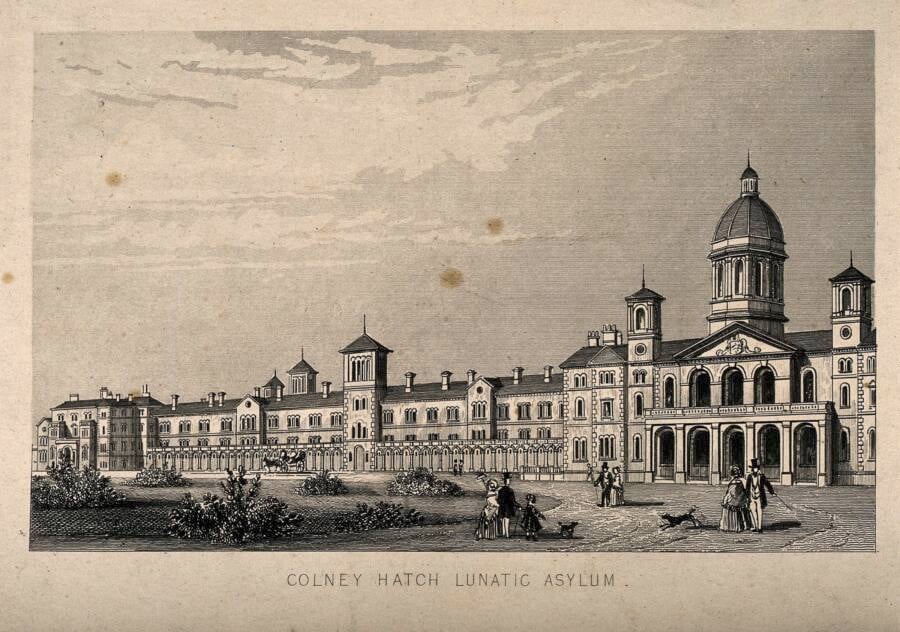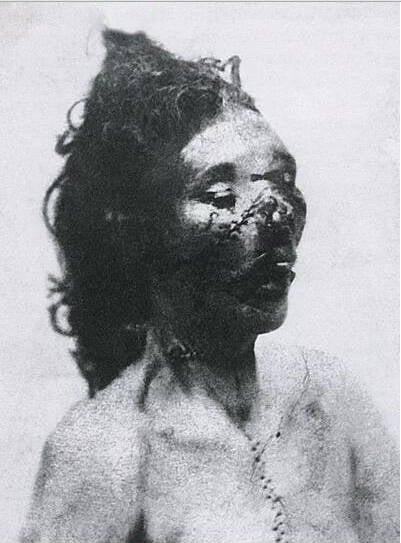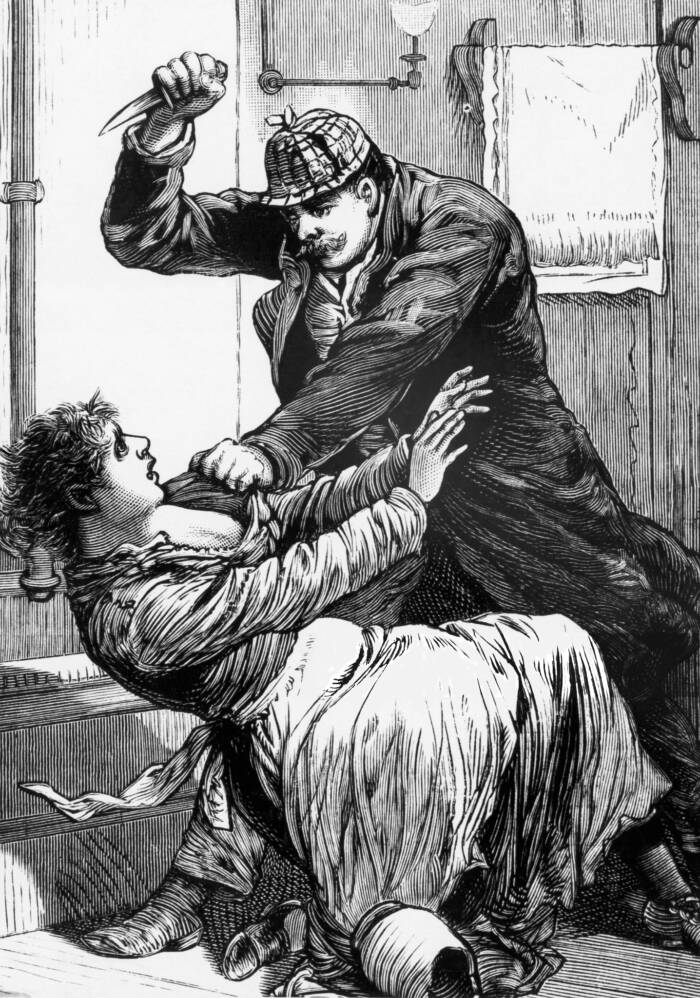DNA evidence suggests that a Polish immigrant named Aaron Kosminski who was working as a hairdresser in London's Whitechapel district in 1888 may have been the infamous serial killer Jack the Ripper.
Perhaps the most infamous serial killer in history, Jack the Ripper has captivated true crime enthusiasts for generations. In particular, the question of his identity has remained compelling for nearly 150 years.
Many suspects have been proposed, but because the Whitechapel murder took place all the way back in 1888, there’s little concrete evidence to go on. With more recent advancements, though, one name has become a focal point for so-called “Ripperologists”: Aaron Kosminski.

Public DomainAaron Kosminski, the 23-year-old Polish barber who may have been Jack the Ripper.
In fact, Aaron Kosminski’s name was possibly listed in investigators’ notes back in the 1880s, though he was never officially linked to any of the crimes. Several studies in the past decade, however, claim to have discovered DNA evidence linking Kosminski to at least one of Jack the Ripper’s murder victims — which would likely link him to the others as well.
The jury is still out, officially, on whether Aaron Kosminski was Jack the Ripper, but the evidence against him is certainly compelling.
Who Was Aaron Kosminski?
Aaron Kosminski was born on September 11, 1865, in Kłodawa in Congress Poland, which was at the time a part of the Russian Empire. He was the son of Golda and Abram Józef Kozmiński. Much of his early life is unknown, of course, but records indicate that around 1880 he emigrated from Poland and lived for some time in Germany.
His exact reasoning for leaving Poland is unclear. It’s possible that he may have left to live with one of his sisters and their family, since a niece and nephew of his were both born in Germany around 1880 and 1881. He could have also left Poland due to the pogroms that began in April 1881 after the assassination of Tsar Alexander II, which caused a great number of Jews to flee the country.

Wikimedia CommonsColney Hatch Lunatic Asylum, where Aaron Kosminski would later be admitted.
In any case, Kosminski eventually found himself in the Whitechapel district of London, where many Jews settled and established new lives after fleeing various troubles in Eastern Europe.
Here, Kosminski worked for some time as a barber, though it is possible that he only worked sporadically as he often relied on his sisters for financial support.
What is clear is that Aaron Kosminski was unwell. Records from 1890 show that Kosminski had been moved to the Mile End Old Town workhouse by his brother Woolf as a result of his rapidly deteriorating mental health.

Wikimedia CommonsAn 1894 Ordnance Survey Map of Whitechapel with red annotated dots marking the locations of Jack the Ripper’s seven victims.
Since at least 1885, Kosminski had been suffering from a variety of mental afflictions including auditory hallucinations, paranoia, and a refusal to bathe himself. He had a poor diet as well, often picking up food other people had dropped and eating it himself.
Although he was released a few days later, he would find himself back in the workhouse on February 4, 1891 — then transferred to the Colney Hatch Lunatic Asylum three days later after allegedly threatening his sister with a knife.
Aaron Kosminski remained at Colney Hatch Lunatic Asylum for three years before being transferred to the Leavesden Asylum on April 19, 1894.
He died in March 1919, aged 53 and weighing just 96 pounds.
DNA Evidence Links To Jack The Ripper
Aside from a mention of the name “Kosminski” in Assistant Chief Constable Sir Melville Macnaghten’s 1894 memorandum, Aaron Kosminski remained a rather obscure figure among Jack the Ripper suspects until around 2014, when a study claimed to have found DNA evidence linking Kosminski to the Ripper’s fourth victim, Catherine Eddowes.
A second study, published in the Journal of Forensic Sciences, reviewed the claims of the original 2014 study and came to the same result: Aaron Kosminski’s DNA was found on a shawl that belonged to one of Jack the Ripper’s East End victims.

Wikimedia CommonsA mortuary photograph of Jack the Ripper’s fourth victim, Catherine Eddowes.
These claims were met with a mix of skepticism on one side and complete acceptance on the other. In fact, British author Russell Edwards — who had commissioned the 2014 study — went as far as to declare that Kosminski was Jack the Ripper in his book, Naming Jack the Ripper.
According to Smithsonian, the second study in 2019 was largely founded on DNA samples including blood and possibly semen found on a shawl belonging to Catherine Eddowes, and it was found that the mitochondrial genetic material matched closely to that of a living relative of Kosminski.
“I was able to identify body cells that were consistent with the presence of seminal fluid on the shawl and which enabled us to match DNA with the descendants of one of the suspected killers, Polish immigrant Aaron Kosminski,” said Dr. David Miller of the School of Medicine at the University of Leeds.
Of course, the presence of Kosminski’s seminal fluid alone doesn’t necessarily mean he was Jack the Ripper — though, it’s certainly an intriguing argument.

It was the study’s co-author Dr. Jari Louhelainen, a senior lecturer in molecular biology at Liverpool John Moores University, who managed to test the mitochondrial DNA from the shawl’s bloodstain to that of Karen Miller — a descendant of Eddowes.
Was Aaron Kosminski Jack The Ripper? Why Some Still Say No
While mitochondrial DNA linking Aaron Kosminski to Catherine Eddowes is certainly fascinating, there is also a considerable amount of criticism to this theory.
Some researchers have argued, for example, that there is no evidence whatsoever of the shawl being present at any of Jack the Ripper’s crime scenes and that mitochondrial DNA isn’t conclusive enough as evidence to link the barber to the killings of the “canonical five” victims: Mary Ann Nichols, Annie Chapman, Elizabeth Stride, Catherine Eddowes, and Mary Jane Kelly.
On the other hand, there is primary evidence from the 1880s referencing the Polish man’s name — again, investigators’ notes from the era mentioned a “Kominski” in their notes — with one witness even claiming that she’d seen Kosminski attacking one of Jack the Ripper’s victims with a knife.

Public DomainAn illustration of Jack the Ripper in the Police Gazette, undated.
While that witness later refused to testify, the theory isn’t entirely dismissible — yet not provable, either.

Furthermore, analysis of the shawl itself suggested that not only was the fabric too fine for a sex worker of the time to have worn, but that it was likely produced in Russia. This, of course, could indicate that Aaron Kosminski himself may have bought the scarf in then-Russian-controlled Poland.
In the end, the mystery and intrigue regarding Jack the Ripper’s identity will likely continue to captivate historians, literary obsessives, and true crime fanatics alike.
Ultimately, this theory carries some amount of weight to many — but hasn’t quite put the serial killer’s anonymous nature to bed for many others.
After this look at Jack the Ripper suspect Aaron Kosminski, read about Jack the Ripper’s victims. Then, learn about James Maybrick and how his diary suggests that he may have been Jack the Ripper.





